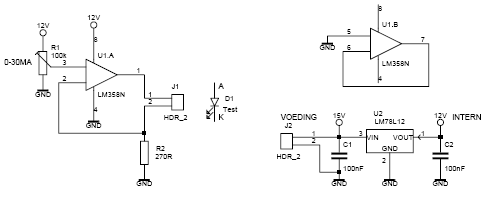
Simple Remote Control Tester

The circuit biases the BC558 transistor, causing LED D1 to flash in response to signals from the remote control. The preset resistor in the circuit sets the sensitivity level.
The circuit utilizes a BC558 PNP transistor, which plays a crucial role in controlling the LED's operation based on the input signals received from a remote control unit. The BC558 is biased to operate in its active region, allowing it to amplify the small signals coming from the remote control, which can be infrared or radio frequency signals depending on the design.
The LED D1 serves as an indicator, illuminating to show that a signal has been received and processed by the circuit. The flashing of the LED is directly correlated to the frequency and duration of the signals transmitted by the remote control, providing a visual cue of the communication activity.
A preset resistor is incorporated into the circuit to adjust the sensitivity of the BC558 transistor. By varying the resistance, the threshold for signal detection can be modified, allowing the circuit to be fine-tuned for optimal performance in different environments or with different remote control units. This adjustment is essential for ensuring that the circuit can effectively respond to the intended signals without being triggered by noise or interference.
Overall, this simple yet effective circuit design demonstrates the fundamental principles of transistor operation, signal amplification, and visual feedback through LED indicators, making it suitable for various applications in remote control systems.In the circuit here it simply biases the BC558 which, in turn, makes LED D1 flash in sympathy with the telegram from the remote control. The preset in the circuit determines the sensitivity. 🔗 External reference
The circuit utilizes a BC558 PNP transistor, which plays a crucial role in controlling the LED's operation based on the input signals received from a remote control unit. The BC558 is biased to operate in its active region, allowing it to amplify the small signals coming from the remote control, which can be infrared or radio frequency signals depending on the design.
The LED D1 serves as an indicator, illuminating to show that a signal has been received and processed by the circuit. The flashing of the LED is directly correlated to the frequency and duration of the signals transmitted by the remote control, providing a visual cue of the communication activity.
A preset resistor is incorporated into the circuit to adjust the sensitivity of the BC558 transistor. By varying the resistance, the threshold for signal detection can be modified, allowing the circuit to be fine-tuned for optimal performance in different environments or with different remote control units. This adjustment is essential for ensuring that the circuit can effectively respond to the intended signals without being triggered by noise or interference.
Overall, this simple yet effective circuit design demonstrates the fundamental principles of transistor operation, signal amplification, and visual feedback through LED indicators, making it suitable for various applications in remote control systems.In the circuit here it simply biases the BC558 which, in turn, makes LED D1 flash in sympathy with the telegram from the remote control. The preset in the circuit determines the sensitivity. 🔗 External reference





